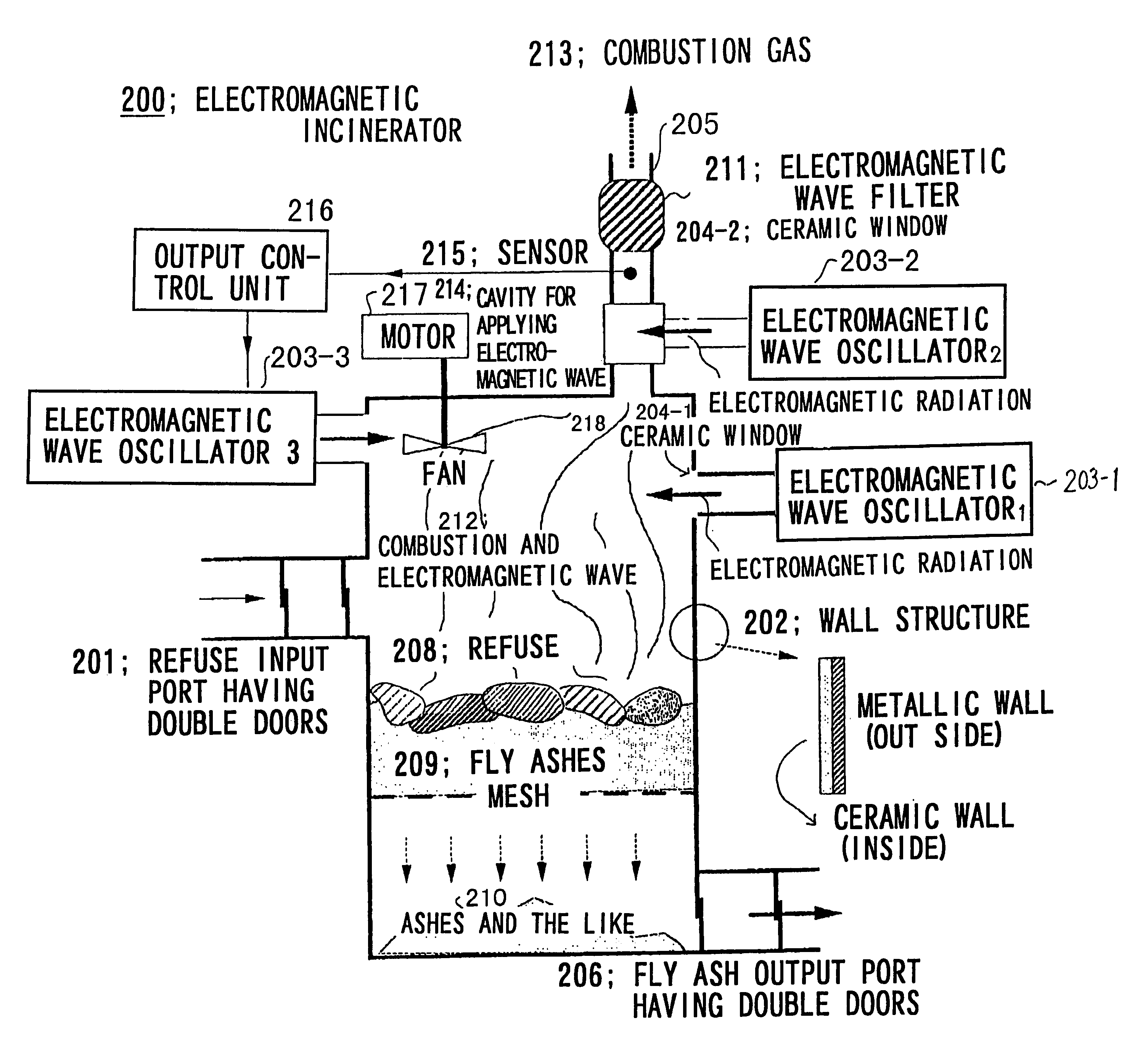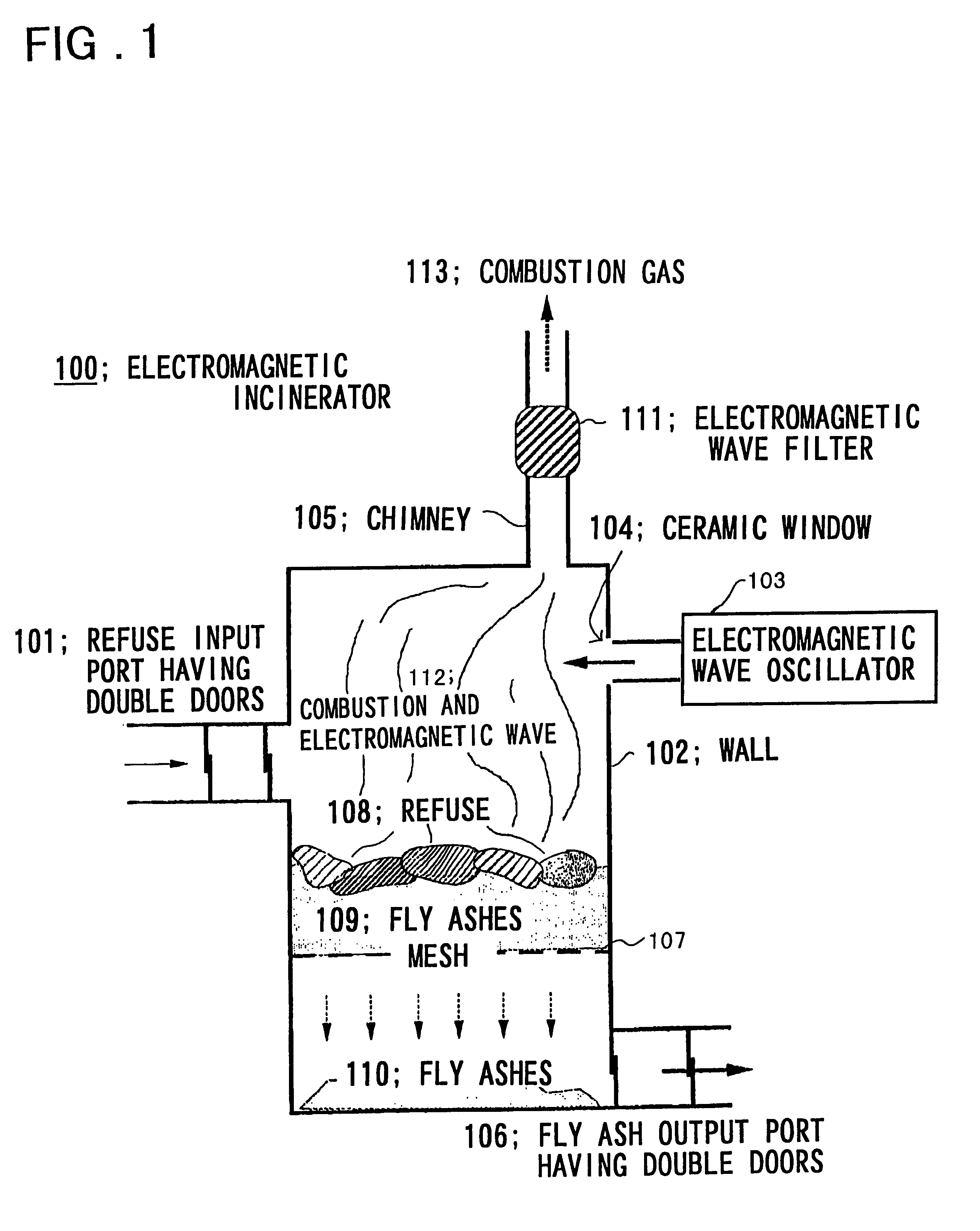Process and apparatus for treating dioxins
a dioxin and process technology, applied in lighting and heating apparatus, separation processes, combustion types, etc., can solve the problems of inability to prolong the residence time of the combustion gas and the combustion temperature cannot be so much raised, and achieve the effect of low cost, high efficiency and suitable
- Summary
- Abstract
- Description
- Claims
- Application Information
AI Technical Summary
Benefits of technology
Problems solved by technology
Method used
Image
Examples
examples
Examples of the present invention are explain ed below in reference to the accompanying drawings. FIG. 1 is a view showing the constitution of an electromagnetic incinerator (incineration-treating apparatus) 100, which is one example of the present invention. Into the incinerator, refuse 108 is input through a refuse input port 108 having double doors. The double doors are designed for preventing the leak of electromagnetic wave directed into the incinerator through the input port. Also a portion out of which fly ashes 110 fallen down through a sieve (mesh) 107 and accumulated on the bottom of the incinerator after incineration are taken, i.e., fly ash output port 106 has also double doors. Though it depends on the scale of the incinerator, incineration is usually performed in an incinerator after bringing refuse thereto using a crane or the like in such a manner as the refuse become easily burnt while the operator monitors the burning state of the refuse held in the incinerator by ...
PUM
| Property | Measurement | Unit |
|---|---|---|
| temperatures | aaaaa | aaaaa |
| temperatures | aaaaa | aaaaa |
| temperatures | aaaaa | aaaaa |
Abstract
Description
Claims
Application Information
 Login to View More
Login to View More - R&D
- Intellectual Property
- Life Sciences
- Materials
- Tech Scout
- Unparalleled Data Quality
- Higher Quality Content
- 60% Fewer Hallucinations
Browse by: Latest US Patents, China's latest patents, Technical Efficacy Thesaurus, Application Domain, Technology Topic, Popular Technical Reports.
© 2025 PatSnap. All rights reserved.Legal|Privacy policy|Modern Slavery Act Transparency Statement|Sitemap|About US| Contact US: help@patsnap.com



